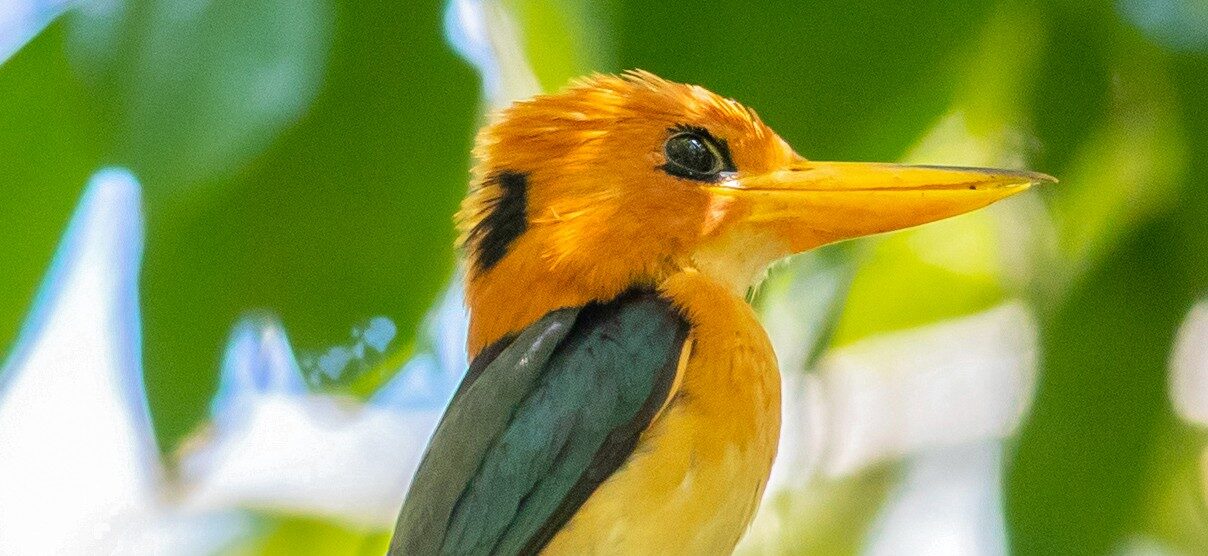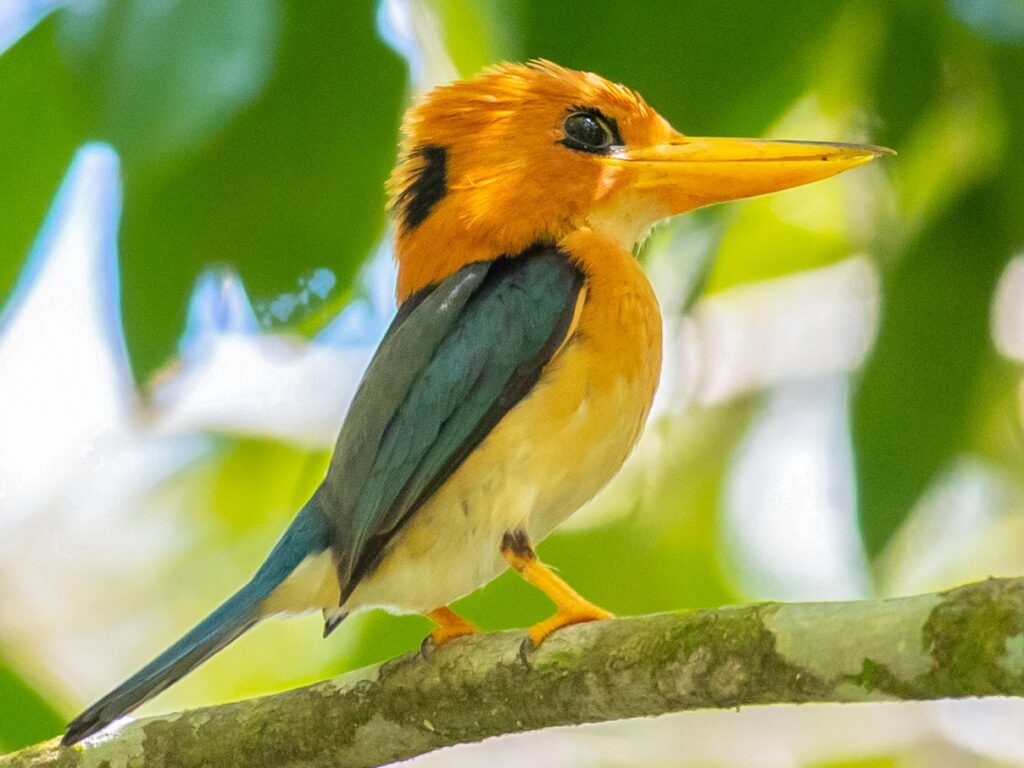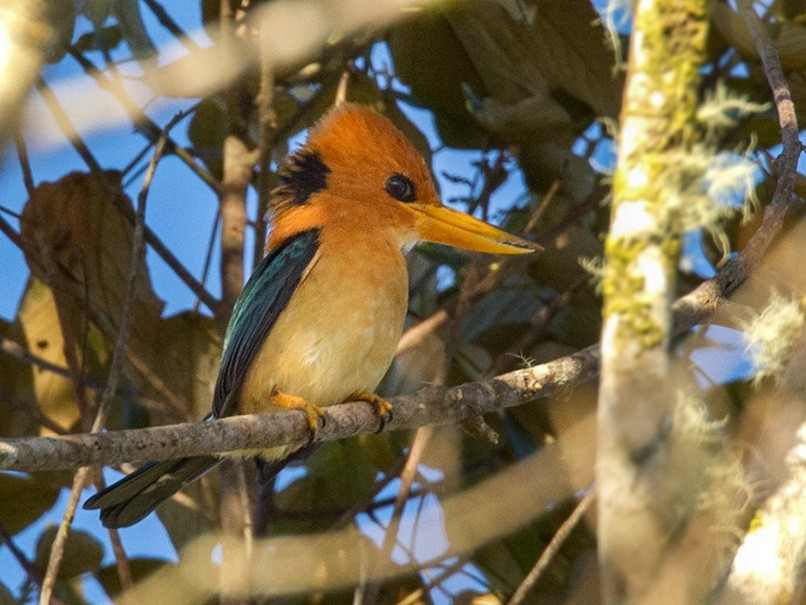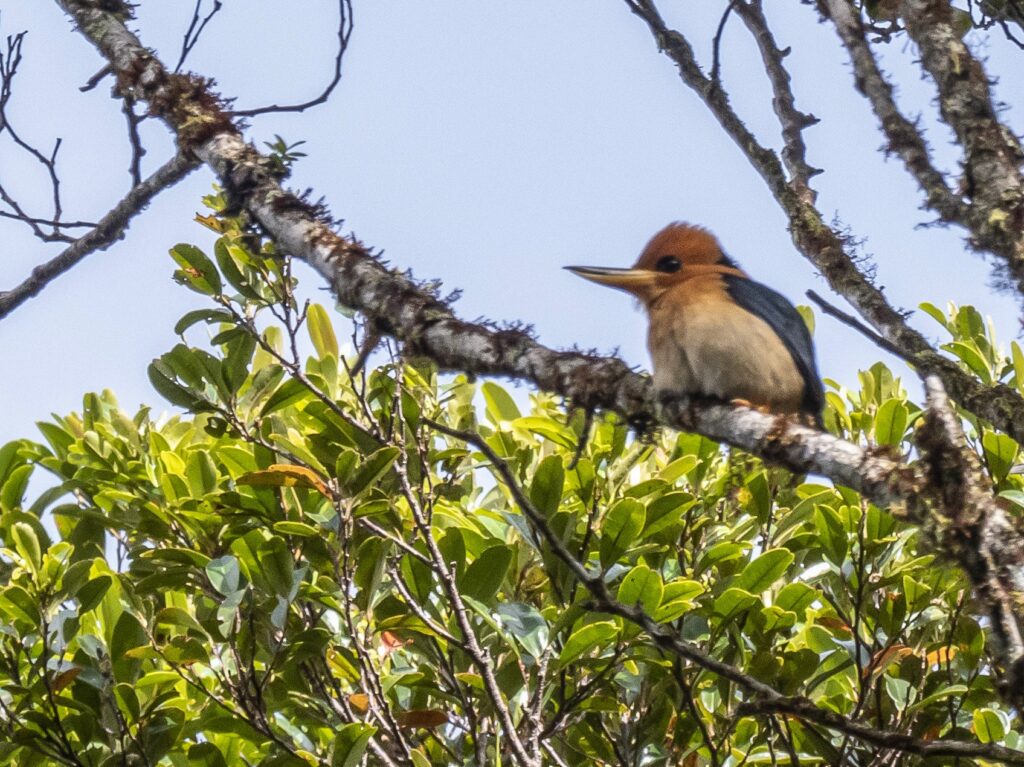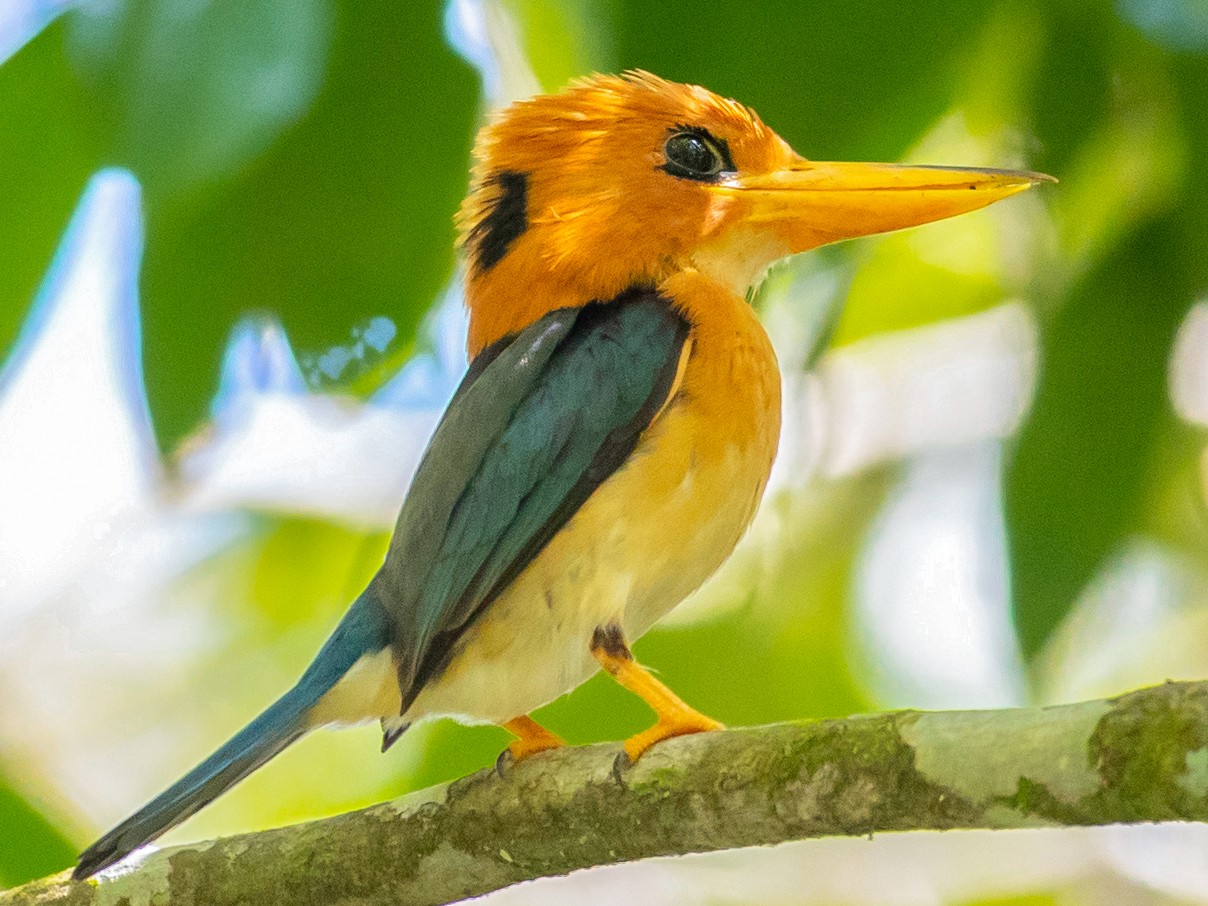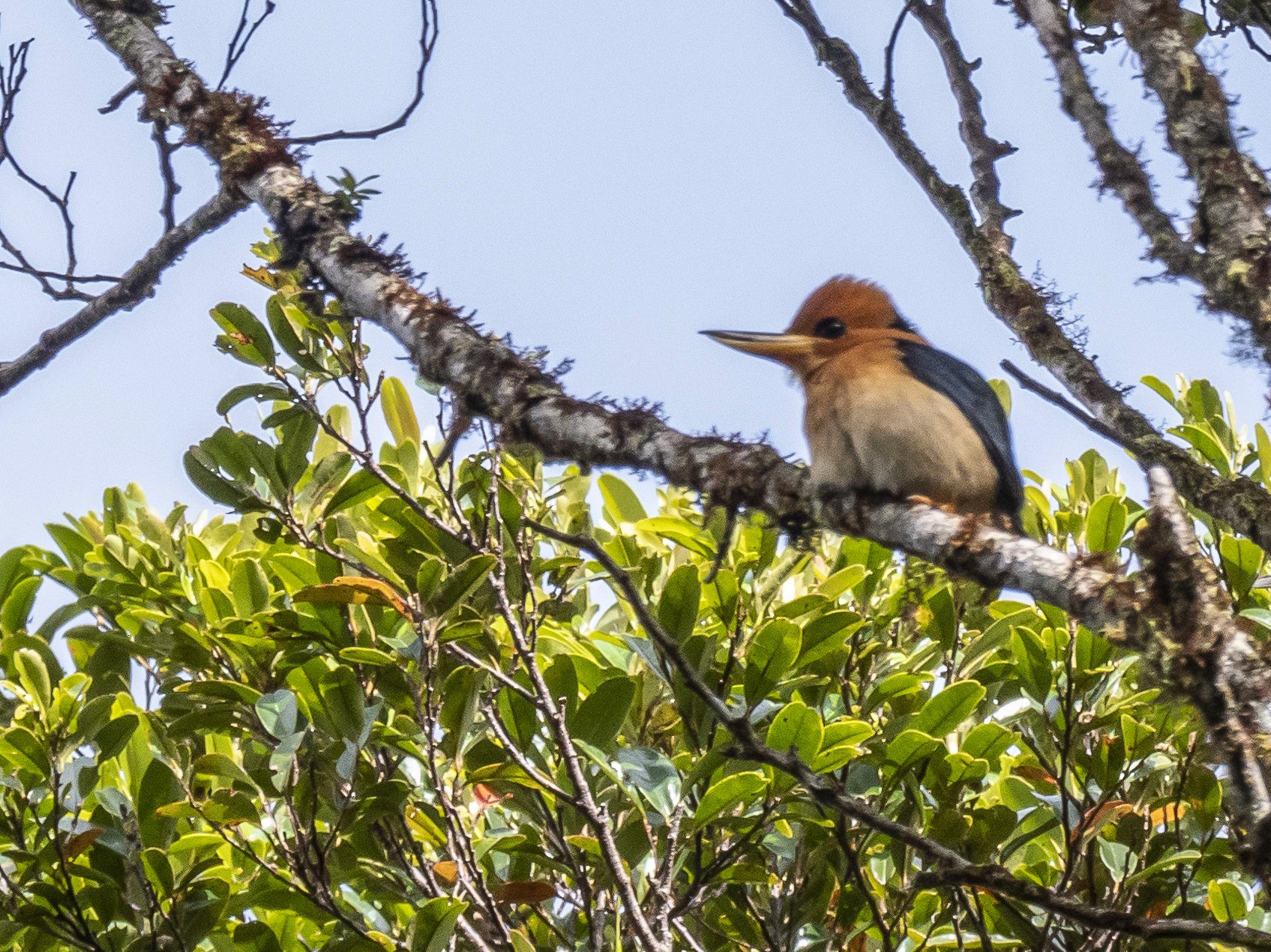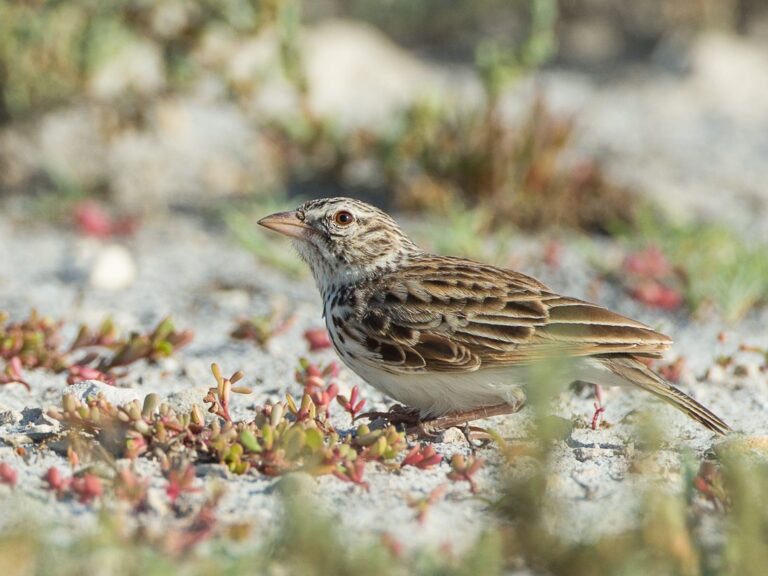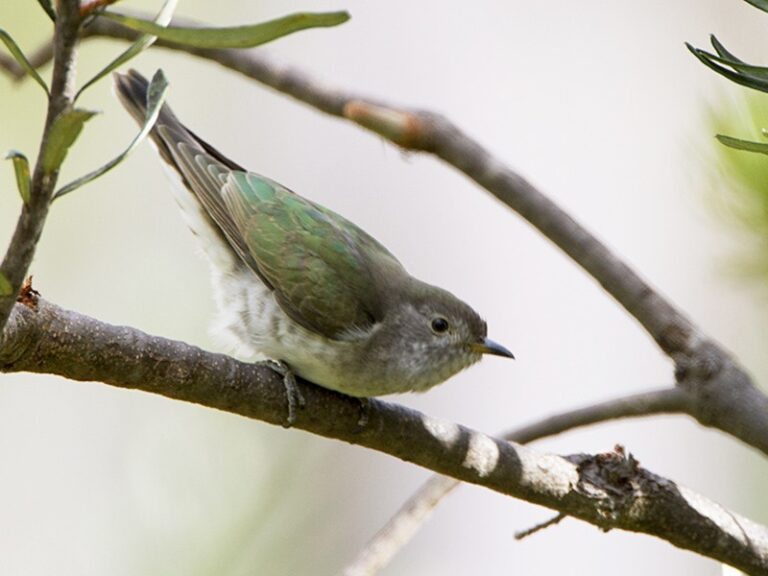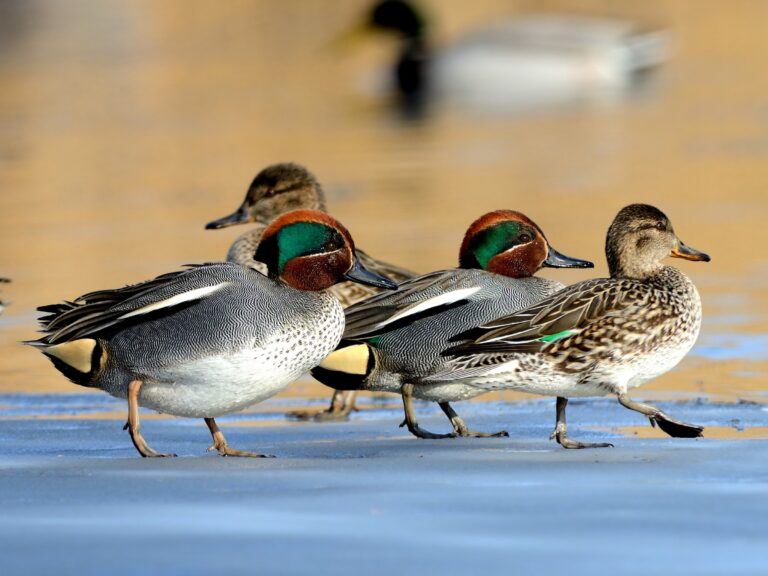The Extrordinary Mountain Kingfisher: Habitat and Behavior
The Mountain Kingfisher, a striking member of the Alcedinidae family, inhabits the elevated regions of New Guinea where it has adapted perfectly to life in mountainous terrain. Unlike its lowland relatives that typically hunt near water, this species has developed unique behaviors suited to forest living.
Recent studies have confirmed that the Mountain Kingfisher (Syma megarhyncha) and the Yellow-billed Kingfisher are closely related, forming a distinct evolutionary branch that showcases how these birds have adapted to different elevational gradients across their range.
These colorful birds represent a fascinating example of speciation driven by elevation.
Researchers examining kingfishers across New Guinea have documented how populations separated by mountain ranges have developed into distinct species over time.
The Mountain Kingfisher’s specialized hunting techniques and nesting behaviors differ significantly from those of their river-dwelling cousins like the Belted Kingfisher or Amazon Kingfisher, demonstrating nature’s remarkable ability to fill ecological niches.
Key Takeaways
- Mountain Kingfishers belong to the genus Syma and have evolved specialized traits that allow them to thrive in New Guinea’s mountainous forests.
- DNA research confirms Mountain Kingfishers are closely related to Yellow-billed Kingfishers, showing how elevation drives speciation in these birds.
- Unlike most kingfishers that hunt fish in water bodies, Mountain Kingfishers have adapted different feeding and nesting behaviors suited to their forest habitat.
Taxonomy and Classification
The Mountain Kingfisher (Syma megarhyncha) belongs to a well-defined taxonomic hierarchy within the bird world. Modern avian classification places this species in context with other kingfishers while recognizing its unique characteristics.
Scientific Nomenclature
The Mountain Kingfisher is scientifically identified as Syma megarhyncha, which differentiates it from its close relative, the Yellow-bellied Kingfisher (Syma torotoro). The genus name “Syma” was established by taxonomists to classify these particular kingfishers found in the New Guinea region.
The species name “megarhyncha” refers to the bird’s relatively large bill compared to similar species. This scientific naming follows principles established by Carl Linnaeus, whose tenth edition of Systema Naturae serves as the starting point of modern avian taxonomy.
Recent bioacoustic studies have contributed significantly to confirming the taxonomic status of this species, as vocalization data has proven to be a crucial taxonomic tool in distinguishing between morphologically similar kingfisher species.
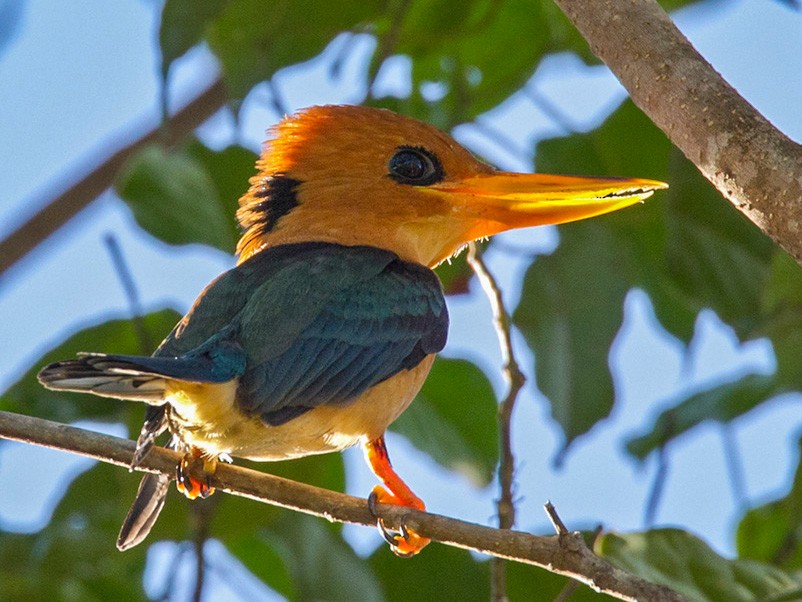
Family and Genus
The Mountain Kingfisher belongs to the family Alcedinidae, which encompasses all kingfishers worldwide. Within this family, it sits in the order Coraciiformes, alongside birds like bee-eaters and rollers.
The genus Syma includes just two recognized species:
- Syma megarhyncha (Mountain Kingfisher)
- Syma torotoro (Yellow-bellied Kingfisher)
These species show distinct elevational separation in New Guinea, with the Mountain Kingfisher inhabiting higher altitudes. Research on speciation across elevational gradients has revealed fascinating genetic differences between these closely related species.
Several subspecies of Mountain Kingfisher have been identified based on subtle variations in plumage and bill structure. These subspecies represent populations adapted to different mountain ranges across the bird’s distribution.
Physical Description
The Mountain Kingfisher exhibits distinct physical traits that set it apart from other kingfisher species. Its appearance combines specialized adaptations for its mountain habitat with the characteristic kingfisher form.
Plumage and Size
Mountain Kingfishers typically display vibrant blue upperparts contrasted with orange or rufous underparts. Males and females show slight dimorphism, with males featuring more intense coloration.
They measure approximately 16-18 cm in length, making them medium-sized among kingfisher species.
Their compact bodies are designed for efficient flight through forest canopies and around rocky mountain streams. The head features a prominent crest that can be raised when the bird is alert or during courtship displays.
Mountain Kingfishers possess short, strong wings adapted for quick, darting movements in dense vegetation. Their plumage is notably water-resistant, allowing them to dive into mountain streams without becoming waterlogged.
The Cinnamon-collared Kingfisher is a threatened variant found in some mountainous regions, featuring distinct cinnamon collar markings.
Distinctive Bill
The Mountain Kingfisher’s bill is a remarkable adaptation perfectly suited to its hunting habits. At 3-4 cm long, the bill is straight, robust, and dagger-like—ideal for catching and securing prey from mountain streams.
This specialized bill allows the bird to grasp slippery fish, amphibians, and insects with precision.
Unlike lowland kingfisher species, the Mountain Kingfisher’s bill is slightly shorter and stronger to withstand impact against rocks when diving for prey in shallow mountain streams.
The bill coloration ranges from black to dark gray, sometimes with a lighter base. Young birds initially have duller, shorter bills that develop fully as they mature.
Comparison of Kingfisher Bills:
| Species | Bill Length | Bill Shape | Habitat Adaptation |
|---|---|---|---|
| Mountain Kingfisher | 3-4 cm | Straight, robust | Rocky streams |
| Belted Kingfisher | 5-6 cm | Longer, more pointed | Rivers, lakes |
This specialized bill structure makes Mountain Kingfishers highly effective predators in their challenging habitat.
Distribution and Habitat
Mountain Kingfishers inhabit specific regions across varied elevations with distinct habitat preferences. Their range spans several mountain systems where they have adapted to both montane forests and lowland areas with appropriate water sources.
Geographic Range
Mountain Kingfishers are primarily found throughout the mountains of New Guinea. Their distribution covers both the central highlands and outlying mountain ranges of this large island.
These birds show a patchy distribution pattern, with populations concentrated around suitable riverine habitats and forest streams. They are more common in the northern ranges of New Guinea compared to southern regions.
Some isolated populations exist on nearby smaller islands, though these are less documented and appear to be more restricted in their range.
Elevation Preferences
Mountain Kingfishers display remarkable adaptability across elevation gradients, typically found from 400 to 2,500 meters above sea level. Their highest population densities occur between 800-1,500 meters.
During breeding seasons, they tend to move to mid-elevation zones (900-1,200 meters) where suitable nesting banks and food resources overlap.
In winter months, some populations migrate to lower elevations, especially when higher mountain streams freeze or food becomes scarce.
Climate change is gradually pushing their range upward, with recent observations showing populations establishing at elevations up to 2,800 meters in some regions.
Habitat Specifics
Mountain Kingfishers require specific habitat features, primarily inhabiting:
- Moist montane forests with clear, fast-flowing streams
- Forest edges adjacent to open water bodies
- Moist lowland areas with sufficient perching options
- Riparian corridors with steep banks for nesting
These birds prefer locations with adequate perches overlooking water, which are essential for their hunting strategy. The ideal habitat includes combination of clear water with visible prey and vertical banks for nest tunnels.
Behavioral Characteristics
Mountain Kingfishers display distinct behaviors that reflect their adaptation to mountain habitats. Their daily activities revolve around hunting, defending territories, and creating secure nesting sites to ensure successful reproduction.
Feeding Habits
Mountain Kingfishers are primarily insectivorous, with a diet consisting mainly of large insects such as beetles, grasshoppers, and dragonflies. They employ a “perch and pounce” hunting strategy, patiently watching from elevated perches before swooping down to capture prey.
Research shows that flying represents a significant portion of their activity budget, with flying accounting for about 33.3% of their time. They select perching spots strategically to maximize hunting success.
Unlike their lowland relatives, Mountain Kingfishers less frequently hunt fish, though they will opportunistically feed on small fish in mountain streams when available.
Their hunting efficiency increases during breeding season when food demands are higher.
Territorial Behavior
Mountain Kingfishers fiercely defend their territories, especially during breeding season.
Both males and females participate in territorial defense, using distinctive loud calls to announce ownership and warn intruders.
Studies of similar kingfisher species indicate complex territorial behaviors including prospecting and dispersal.
Territories typically encompass suitable hunting grounds and potential nesting sites.
Territory size varies based on habitat quality and food availability. In areas with abundant resources, territories may be smaller (1-2 hectares), while resource-poor regions may require larger territories (4-5 hectares).
Visual displays often accompany vocal warnings, with kingfishers raising their crest feathers and performing aerial displays to intimidate rivals. Territory disputes rarely result in physical contact, as most conflicts are resolved through vocal and visual signaling.
Nesting Patterns
Mountain Kingfishers construct nests by excavating tunnels in earthen banks, soft cliff faces, or occasionally in tree cavities.
Both partners participate in the excavation process, which can take 1-3 weeks to complete.
Tunnel length typically ranges from 30-100 cm, with a nesting chamber at the end. The chamber remains unlined, with eggs laid directly on the earth floor or occasionally on regurgitated insect parts.
Thermal characteristics of nesting sites are crucial, as kingfishers select locations that provide stable temperatures for egg incubation and chick development.
Mountain species often choose north or east-facing banks to avoid afternoon heat.
Clutch sizes average 4-6 eggs, with both parents sharing incubation duties over 18-21 days. After hatching, parents continue to care for chicks for approximately 4 weeks until fledging occurs.
Fledglings remain dependent on parents for another 2-3 weeks while learning hunting skills.
Conservation Status
Mountain Kingfishers face varying degrees of threat across their range due to habitat loss and environmental changes. Their status and protection efforts vary by region and species.
IUCN Red List
The conservation status of most kingfisher species is classified as Least Concern by the IUCN Red List. This classification indicates their populations remain relatively stable. However, this status can vary significantly among different Mountain Kingfisher species.
Some endemic Mountain Kingfisher populations, particularly those on islands like New Britain in Papua New Guinea, require closer monitoring.
The New Britain Kingfisher has experienced status revisions in recent years.
Population assessments are regularly conducted to track changes and identify emerging threats. These assessments help scientists understand whether protection measures are working effectively.
Conservation Efforts
Conservation initiatives for Mountain Kingfishers focus primarily on habitat protection. Many species depend on specific forest types and water bodies that face increasing human encroachment.
Protected area designation has helped preserve critical kingfisher habitats in many regions.
These areas limit development and resource extraction that could harm breeding and feeding grounds.
Some conservation programs specifically monitor kingfisher occupancy status and spatial distribution to identify priority areas for protection.
This data-driven approach ensures resources target the most vulnerable populations.
Research on threats to kingfishers in university campuses and other semi-developed areas provides insights for urban conservation planning.
These studies help develop strategies to maintain kingfisher populations even in areas with human activity.
Cultural Significance and Human Interaction
The Mountain Kingfisher holds special meaning in various cultures and continues to fascinate humans through both mythology and recreational activities. Its distinctive appearance and behaviors have inspired stories and attracted bird watchers to mountain habitats.
In Mythology
The Mountain Kingfisher appears in numerous cultural narratives across regions where it’s native.
In some Eastern traditions, the bird symbolizes prosperity and good fortune when spotted near homes.
Ancient Greeks connected kingfishers to Halcyon days, a period of calm weather supposedly brought by the Sea Nymph Alcyone who transformed into a kingfisher.
Several mountain communities believe sighting the bird before important journeys brings safe travels.
Its vibrant plumage often represents divine beauty in traditional stories, with feathers occasionally used in ceremonial garments.
The bird’s patience while hunting has made it a symbol of mindfulness in some cultures.
Its distinctive diving technique appears in creation myths explaining how humans learned fishing skills from observing these remarkable birds.
Bird Watching Impact
Mountain Kingfisher populations have experienced both challenges and benefits from human bird watching activities.
Dedicated enthusiasts travel significant distances to remote mountain regions, creating economic opportunities for local communities through eco-tourism.
Photography of these birds has increased awareness of their ecological importance and conservation needs.
Bird watching clubs often organize special trips to kingfisher habitats, with strict guidelines to minimize disturbance during feeding and breeding seasons.
The occasional close encounters between humans and kingfishers have led to valuable research data about their behaviors. However, increased human presence can disrupt nesting sites when not properly managed.
Conservation efforts benefit from bird watchers who report population changes and habitat threats. Many organizations now use kingfisher sightings as indicators of ecosystem health in mountain waterways, highlighting the positive impact of responsible human interaction.
Related Species
The Mountain Kingfisher belongs to a diverse family with many fascinating relatives across different habitats worldwide. These birds share distinctive characteristics while exhibiting unique adaptations to their specific environments.
Alcedinidae Family
The Alcedinidae family includes about 114 species of kingfishers divided into three subfamilies. These birds are characterized by their large heads, long bills, short legs, and stubby tails.
Most kingfishers have bright plumage with blues, greens, and oranges being common colors. Males and females often look similar, though subtle differences exist in some species.
The family originated in the Old World tropics, with the greatest diversity found in Southeast Asia and Australasia. They inhabit various ecosystems from tropical forests to arid regions.
Their diet varies by species and habitat. While many eat fish, others consume insects, crustaceans, amphibians, reptiles, and even small mammals.
Notable Kingfishers
The Yellow-billed Kingfisher (Syma torotoro) is closely related to the Mountain Kingfisher. It inhabits lowland forests and displays striking yellow and green plumage.
The Belted Kingfisher (Megaceryle alcyon) is widespread across North America. It’s recognized by its shaggy crest and blue-gray coloration with a distinctive belt across the chest.
The Laughing Kookaburra, the largest kingfisher species, is famous for its call that sounds like human laughter. It primarily eats terrestrial prey rather than fish.
The White-throated Kingfisher has adapted to varied habitats including agricultural lands. Its brilliant blue wings contrast with its white throat and chestnut body.
The Striped Kingfisher prefers open woodland and savanna habitats in Africa. It’s smaller than many kingfishers and hunts primarily from perches.
Frequently Asked Questions
Mountain Kingfishers spark curiosity among birdwatchers and nature enthusiasts. These distinctive birds have unique characteristics, specific habitat preferences, and interesting behaviors that set them apart from other kingfisher species.
What are the distinguishing features of the Mountain Kingfisher?
Mountain Kingfishers typically display vibrant blue upperparts contrasted with orange or rufous underparts. They have a distinctive large head, powerful bill, and compact body structure adapted for diving.
Their bills are longer and stronger than those of other similar-sized birds, designed specifically for catching prey in mountain streams.
Adult Mountain Kingfishers usually reach 16-18 cm in length with a wingspan of approximately 25-28 cm.
These birds also feature a short tail and relatively small feet. Many Mountain Kingfisher species have white patches or spots on their wings or neck, creating a striking appearance against their colorful plumage.
In which habitats can the Mountain Kingfisher typically be found?
Mountain Kingfishers inhabit subtropical mountain environments, particularly near fast-flowing streams and rivers with clear water. They prefer areas with overhanging vegetation that provides perching spots for hunting.
Unlike common kingfishers that prefer lowland habitats, Mountain Kingfishers have adapted to higher elevations, sometimes found at altitudes of 1,000-2,500 meters.
They typically select territories with abundant prey and suitable nesting sites in nearby banks or cliffs.
The birds show a preference for pristine, undisturbed waterways with minimal human interference. Their presence often indicates healthy mountain ecosystems as they require clean waters to spot prey.
What is the diet of a Mountain Kingfisher?
Mountain Kingfishers are primarily piscivorous, feeding mainly on small fish found in mountain streams.
They hunt by perching on branches overhanging water, then diving with precision to catch prey. Their diet also includes aquatic insects, tadpoles, small crustaceans, and occasionally small amphibians.
Studies show that these birds are less abundant than other kingfisher species, likely due to their specialized diet and feeding habits. During breeding season, Mountain Kingfishers may increase their hunting frequency to provide sufficient nutrition for their growing chicks.
They typically swallow smaller prey immediately but return to perches with larger catches.
How do male and female Mountain Kingfishers differ in appearance?
Male and female Mountain Kingfishers exhibit subtle sexual dimorphism.
Females often have slightly duller plumage compared to their male counterparts, with less vibrant blues and oranges.
In some Mountain Kingfisher species, females display a reddish or rufous band on their lower breast that males lack.
Males frequently have more iridescent blue feathers, particularly on the crown and wings.
Size differences are minimal between sexes, though females may be slightly larger in some populations.
Juvenile birds of both sexes appear similar to adults but with less defined coloring and sometimes with spotted or mottled patterns on their breasts.
What is the breeding behavior of Mountain Kingfishers?
Mountain Kingfishers typically form monogamous pairs during breeding season.
They excavate nesting tunnels in riverbanks, soft cliff faces, or occasionally in tree cavities, creating chambers that extend 30-90 cm into the substrate.
The female usually lays 3-6 white eggs which both parents incubate for approximately 19-21 days. After hatching, chicks remain in the nest for about 24-27 days while parents take turns bringing food.
Breeding pairs defend their territory vigorously against intruders, using loud calls and aerial displays. The developmental stages of young kingfishers include learning crucial hunting techniques from parents before becoming independent.
Are Mountain Kingfishers considered migratory or resident birds?
Most Mountain Kingfisher species are resident birds, maintaining their territories year-round.
They typically don’t undertake long-distance migrations due to their specialized habitat requirements.
During winter months in higher elevations, some populations may move to slightly lower altitudes where water remains unfrozen and prey is accessible.
These altitudinal movements are usually limited to a few hundred meters of elevation change.
Climate factors and seasonal food availability influence these local movements.
Young birds disperse from natal territories after fledging, sometimes traveling several kilometers to establish their own territories.
